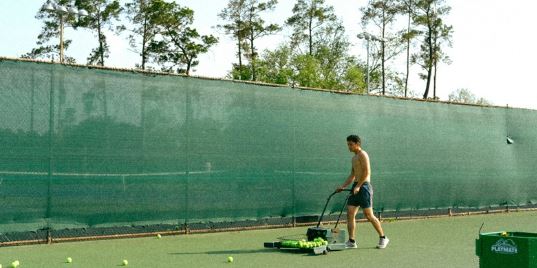A major breakthrough in tennis training was unveiled on May 22, 2024, in Paris, where a new biomechanical training program designed to optimize performance and reduce injury risks was introduced at the Tennis Performance Institute. The program, developed by a collaboration between sports scientists and top tennis coaches, is based on cutting-edge biomechanics research that targets improving stroke efficiency and minimizing common tennis-related injuries, such as shoulder and elbow strain.
The new biomechanical training program introduces advanced techniques that aim to refine the tennis swing while preventing injuries. The program incorporates high-tech motion capture systems and AI-driven analysis to help athletes optimize their movements. Key components of the program include:
- Swing Efficiency Analysis: Using motion capture technology, the program provides a detailed breakdown of each player’s swing, focusing on key areas like racket positioning, footwork, and body alignment. By analyzing these factors, the system identifies inefficiencies or mechanical flaws that could lead to unnecessary strain or reduced power.
- Customized Training Plans: Based on the biomechanical data, players are given personalized drills to improve specific aspects of their technique. For example, players who show signs of shoulder strain due to improper mechanics can receive targeted exercises that promote better posture and reduce shoulder stress.
- Injury Prevention Focus: A significant aspect of the program is its emphasis on injury prevention. By analyzing how players move during their strokes, the system detects risks related to overuse, such as stress on the elbow or wrist, and offers solutions to avoid these injuries before they occur.
- Real-Time Feedback for Players: The integration of wearable devices allows players to receive immediate feedback during practice. These sensors track muscle engagement, joint angles, and movement speed, enabling coaches to make quick adjustments to prevent the development of inefficient techniques or bad habits.
Martine Rousseau, a participant in the program, shared her experience, stating, “The biomechanical analysis has not only helped me refine my technique but also alleviated some of the strain I used to feel in my shoulder. I’m hitting the ball harder and more efficiently without the risk of injury.”
Philippe Lefevre commented, “This program is the future of tennis training. By combining biomechanics with real-time feedback, we’re able to help players perform at their best while keeping their bodies healthy.”
The new training protocol is already gaining attention from tennis academies worldwide, and experts believe that it will become a cornerstone of elite tennis training programs in the years to come.



